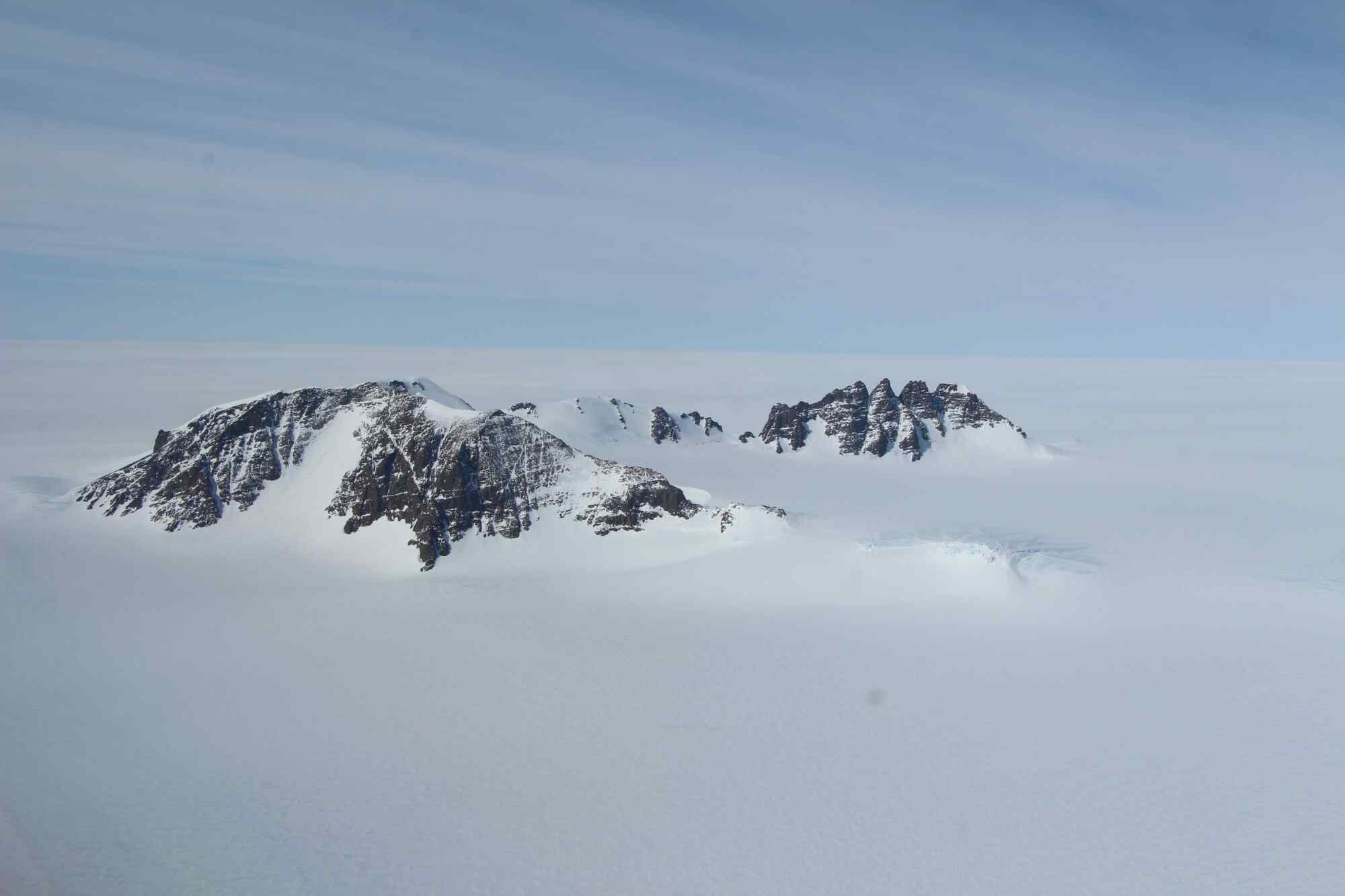
When it comes to amazing natural wonders, nunataks definitely deserve a spot on the list. These unique geographical formations are a sight to behold, with their towering peaks and rugged beauty. Nunataks are essentially isolated peaks or outcrops of rock that protrude above ice sheets and glaciers. While they may be relatively unknown to the general public, they play a crucial role in shaping the Earth’s landscape.
In this article, we will uncover 11 astonishing facts about nunataks that will leave you fascinated and wanting to learn more about these incredible formations. From their formation process to their ecological significance, nunataks have a rich history and offer a unique glimpse into the dynamic nature of our planet. So, get ready to embark on a journey of discovery and be prepared to be amazed by the marvels of nunataks.
Key Takeaways:
- Nunataks are isolated peaks that defy icy landscapes, providing shelter for plant and animal life. They also offer insights into past climate conditions and serve as natural landmarks in polar regions.
- These geological wonders connect continents, serve as mountaineering challenges, and play a crucial role in scientific research. As climate change impacts them, nunataks remind us of Earth’s incredible power and history.
The meaning of Nunatak
The term “nunatak” originates from the Inuit language and translates to “lonely peak.” It perfectly captures the essence of these geological formations, which emerge as isolated peaks amidst vast ice fields and glaciers.
Nunatak’s formation process
During the Ice Age, large parts of the Earth were covered in glaciers. However, nunataks originate from the topographic irregularities that prevented the ice from covering the entire landscape. These elevated peaks managed to “stand tall” above the surrounding ice sheets.
Existence in Antarctica
Antarctica is home to numerous nunataks, which are scattered across the icy continent. They defy the frozen sea and piercing cold, proudly exhibiting their presence amidst the endless expanse of white snow.
A shelter for flora and fauna
Surprisingly, nunataks often provide refuge for plant and animal life in inhospitable polar regions. These isolated peaks create microclimates that offer a more favorable environment for life to thrive compared to the surrounding icy landscape.
Connecting the continents
Nunataks can be found in various parts of the world, acting as rare natural bridges that connect different continents. They serve as remnants of ancient land bridges that once linked now-separate landmasses.
Environmental indicators
Scientists study nunataks as important environmental indicators. By analyzing the flora and fauna present on these isolated peaks, researchers can gain insights into past climate conditions and track environmental changes over time.
A haven for research
Nunataks play a crucial role in scientific research, particularly in the field of glaciology. Researchers frequently study these natural formations to understand the dynamics of glacial movement, ice melting, and the impact of climate change on polar regions.
Nunataks’ significance in mountaineering
Nunataks are often sought after by adventurers and mountaineers as formidable climbing challenges. Scaling these isolated peaks requires not only physical prowess but also a deep respect for the harsh, unforgiving environment they thrive in.
Melting in a changing climate
With the warming of the planet, many nunataks are experiencing the effects of melting ice and receding glaciers. This poses an ecological threat as the unique ecosystems nurtured by these isolated peaks are at risk.
Nunataks as natural landmarks
Embracing the beauty and uniqueness of nunataks, they serve as natural landmarks and points of interest for those exploring the polar regions. These peaks offer breathtaking vistas of their surroundings, leaving visitors in awe of the awe-inspiring landscapes.
The allure of nunataks
The 11 astonishing facts about Nunatak we’ve explored in this article shed light on the captivating world of these geological wonders. From their formation to their ecological significance, nunataks continue to intrigue scientists, explorers, and nature lovers alike. With their resilience, beauty, and connection to Earth’s history, nunataks remind us of the incredible power and wonders that our planet holds.
Conclusion
In conclusion, Nunatak is a fascinating geological phenomenon that offers a unique glimpse into the Earth’s history. These isolated peaks showcase the resilience of life in extreme conditions and provide valuable insights into the effects of climate change. Nunataks serve as important ecological islands, supporting diverse flora and fauna that have adapted to the harsh mountain environments.Exploring Nunataks can be a thrilling adventure, providing opportunities to witness breathtaking landscapes and uncover hidden treasures. Whether you’re a nature enthusiast, an adventure seeker, or a geology lover, visiting Nunataks is sure to leave you awe-inspired.So, what are you waiting for? Start planning your journey to these astonishing landforms and delve into the mysteries they hold. Let the beauty and grandeur of Nunataks captivate and inspire you.
FAQs
Q: What is a Nunatak?
A: A Nunatak is a very specific geological feature – it is an exposed peak or ridge of a mountain that is surrounded by glacial ice or ice fields. Essentially, it is a mountain or rock formation that protrudes above an ice sheet or glacier.
Q: How are Nunataks formed?
A: Nunataks are formed through a process called glacial erosion. As glaciers move, they accumulate and transport rocks and sediment. The constant movement and scraping of the ice against the surrounding mountains gradually erode the softer rocks, leaving behind the more resistant and prominent peaks known as Nunataks.
Q: Where can Nunataks be found?
A: Nunataks can be found in regions of the world where there are large ice sheets or glaciers, such as Antarctica, Greenland, and other polar regions. They can also be found in mountainous areas that are covered by glaciers, like the Himalayas.
Q: Are there any living organisms on Nunataks?
A: Yes, despite the harsh conditions, Nunataks can host a variety of plant and animal life. These organisms have adapted to the extreme environment and have developed unique survival strategies. Some examples include mosses, lichens, and hardy alpine plants.
Q: Do Nunataks have any significance in climate change studies?
A: Yes, Nunataks play a crucial role in studying the effects of climate change. The retreat of glaciers and ice fields exposes Nunataks, allowing scientists to examine the geological features and observe changes in the ice cover over time. This data contributes to our understanding of climate patterns and helps predict future climate scenarios.
Nunataks' allure captivates nature enthusiasts, but there's more to discover in Earth's icy realms. Uncover surprising facts about iceberg lettuce, a crisp addition to salads and sandwiches. Explore polar regions' unique characteristics shaping their frigid landscapes. Marvel at majestic mountains, towering sentinels guarding secrets and offering breathtaking vistas. Each topic unveils a fascinating facet of our planet's diversity, inviting curious minds to embark on thrilling journeys of knowledge.
Was this page helpful?
Our commitment to delivering trustworthy and engaging content is at the heart of what we do. Each fact on our site is contributed by real users like you, bringing a wealth of diverse insights and information. To ensure the highest standards of accuracy and reliability, our dedicated editors meticulously review each submission. This process guarantees that the facts we share are not only fascinating but also credible. Trust in our commitment to quality and authenticity as you explore and learn with us.


